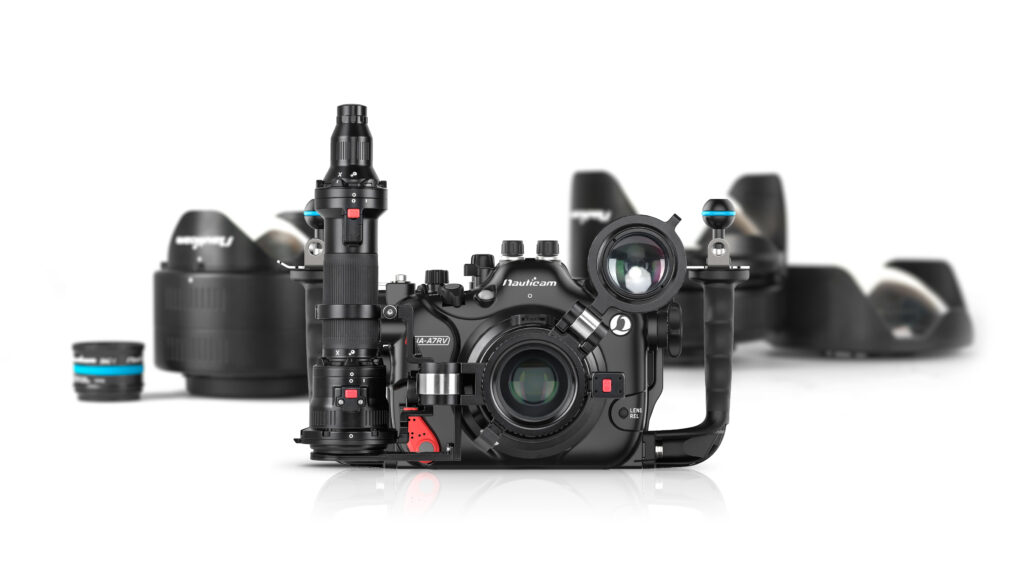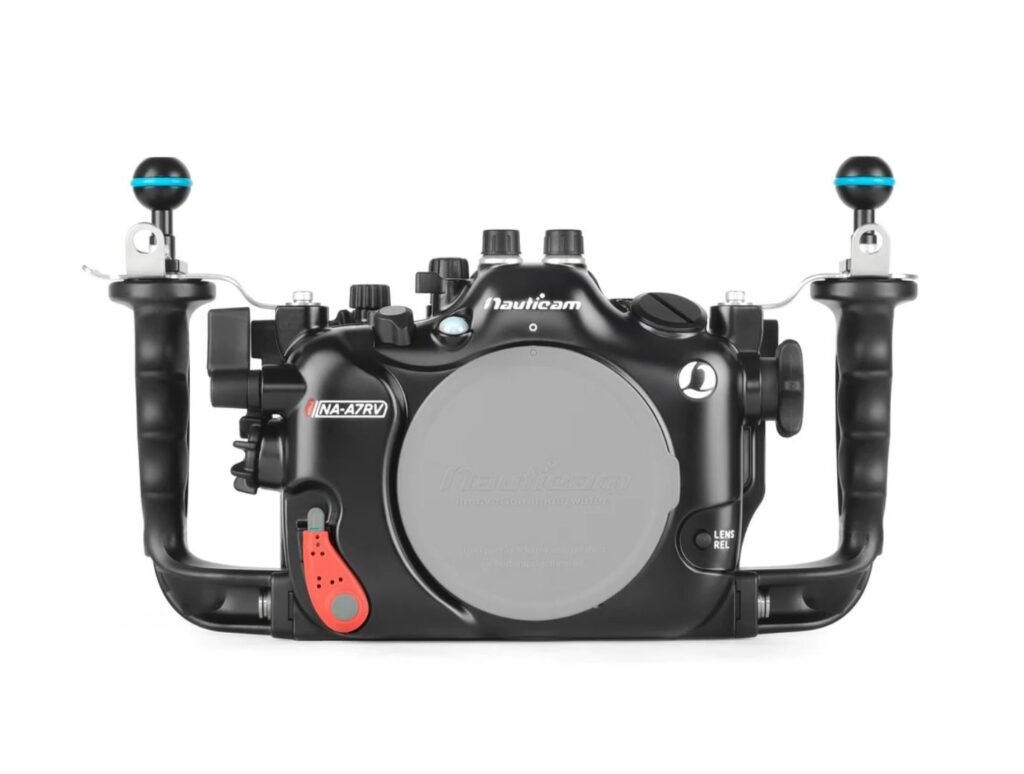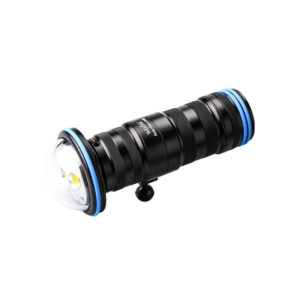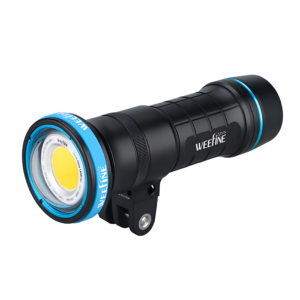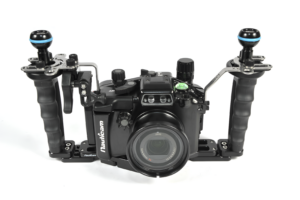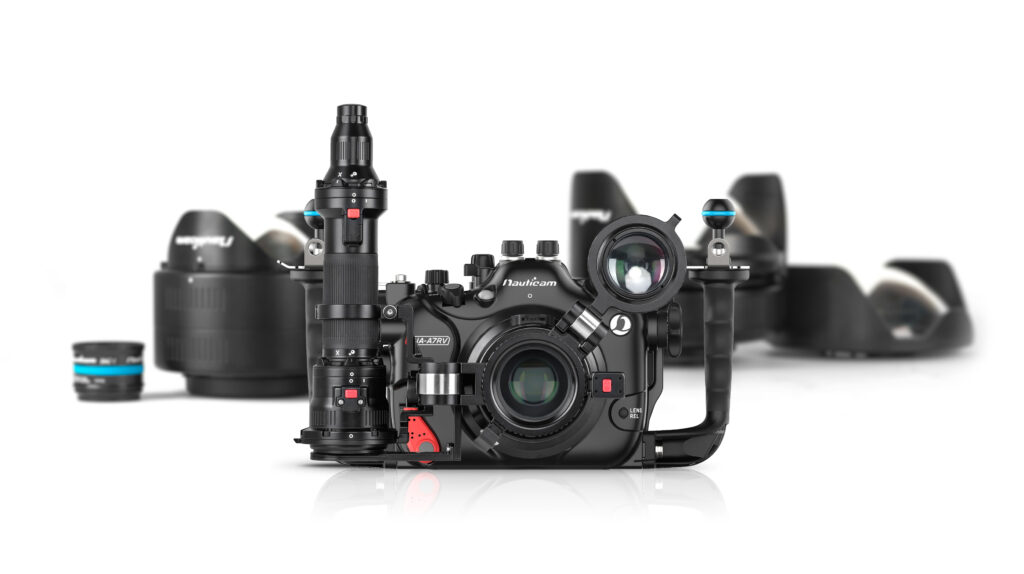
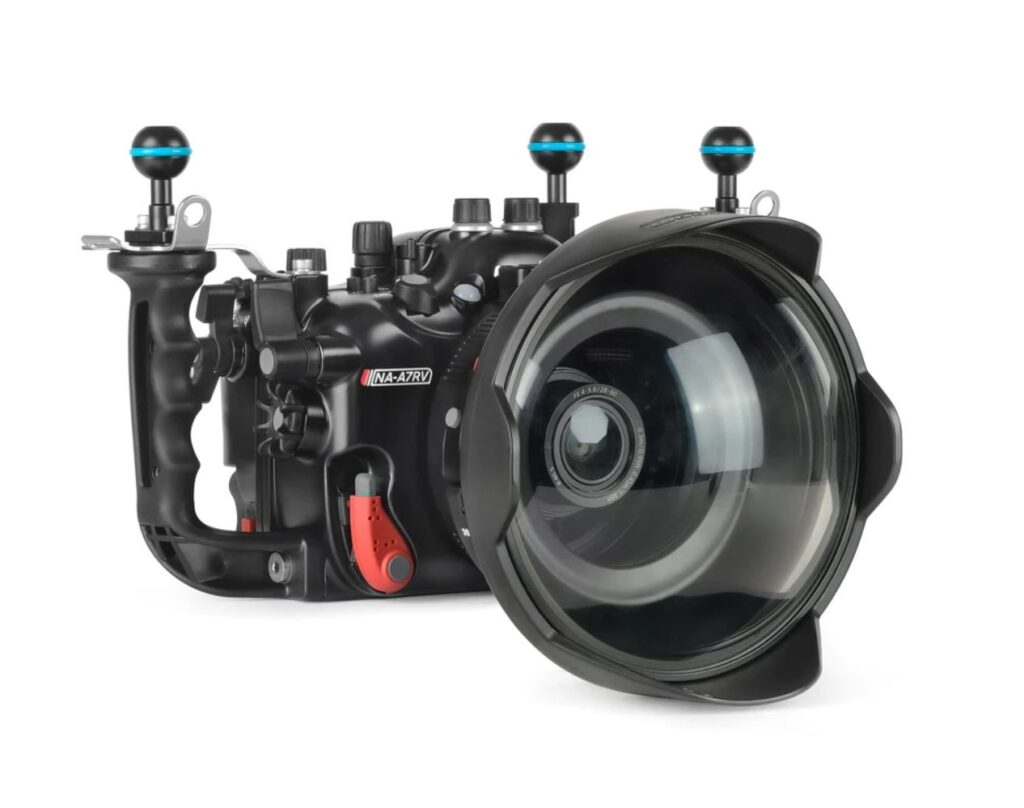
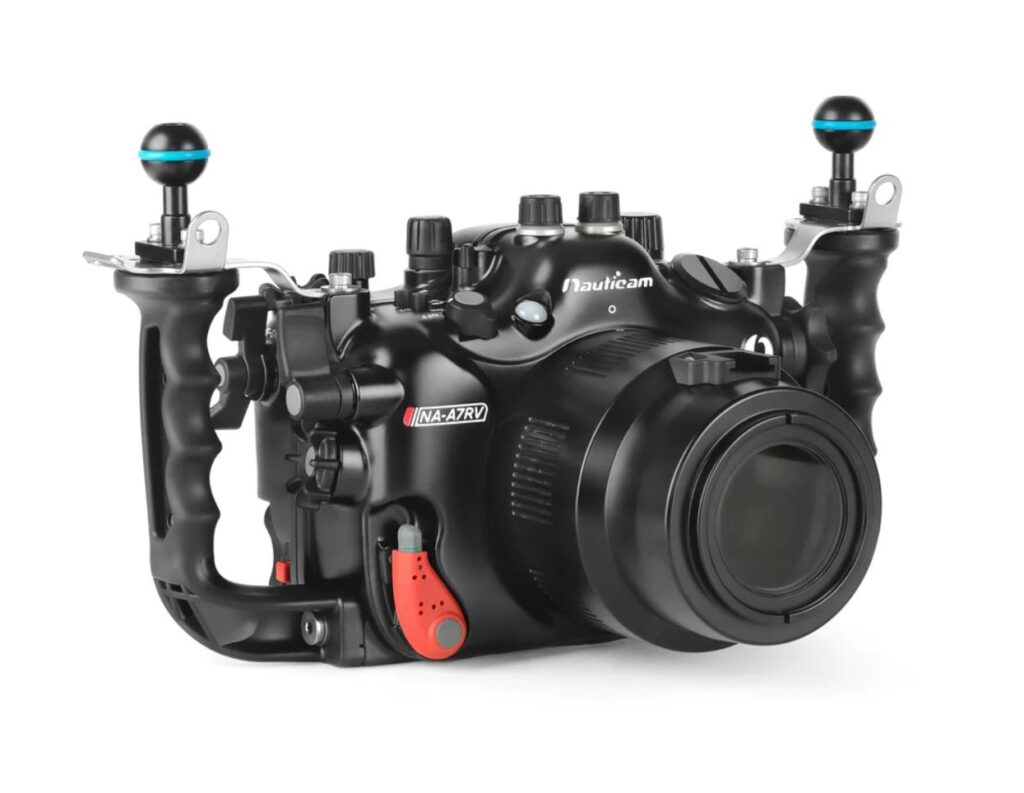
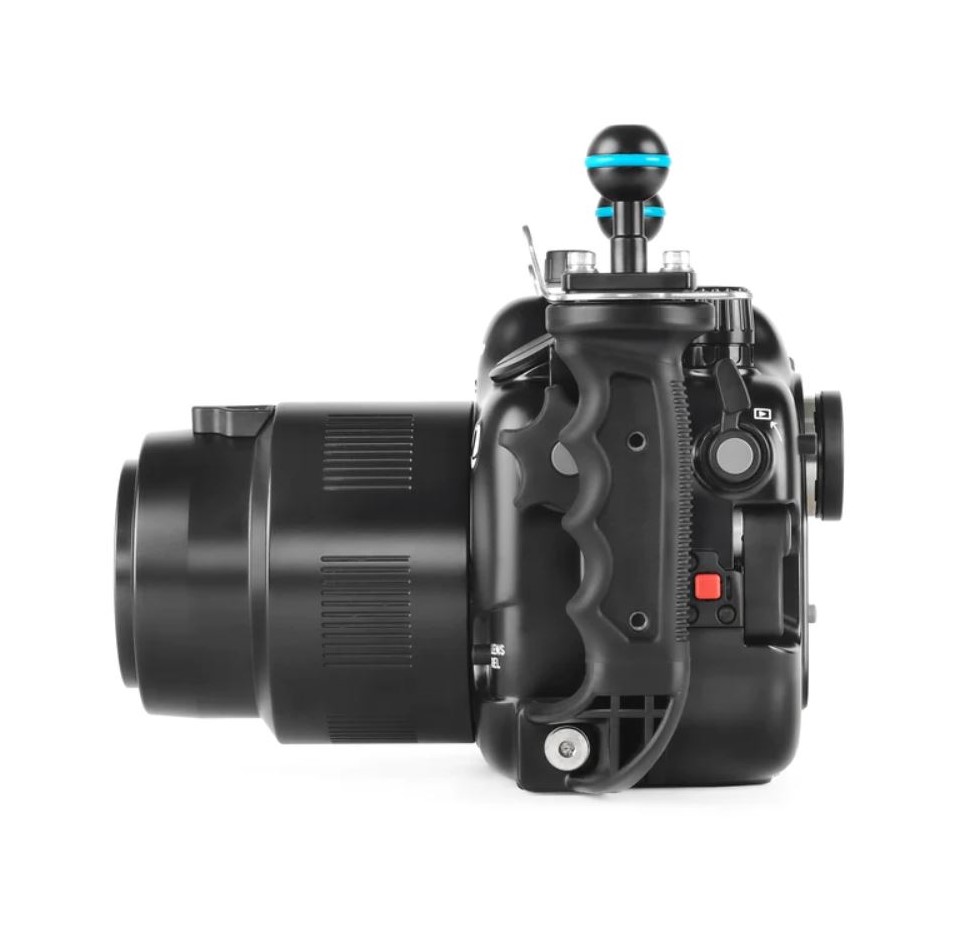
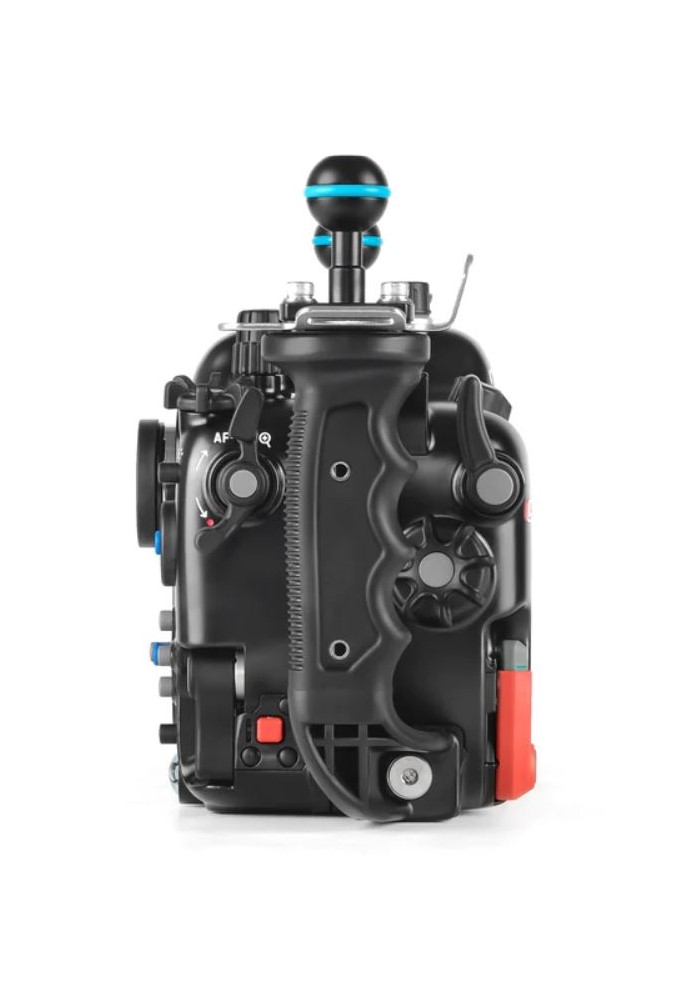
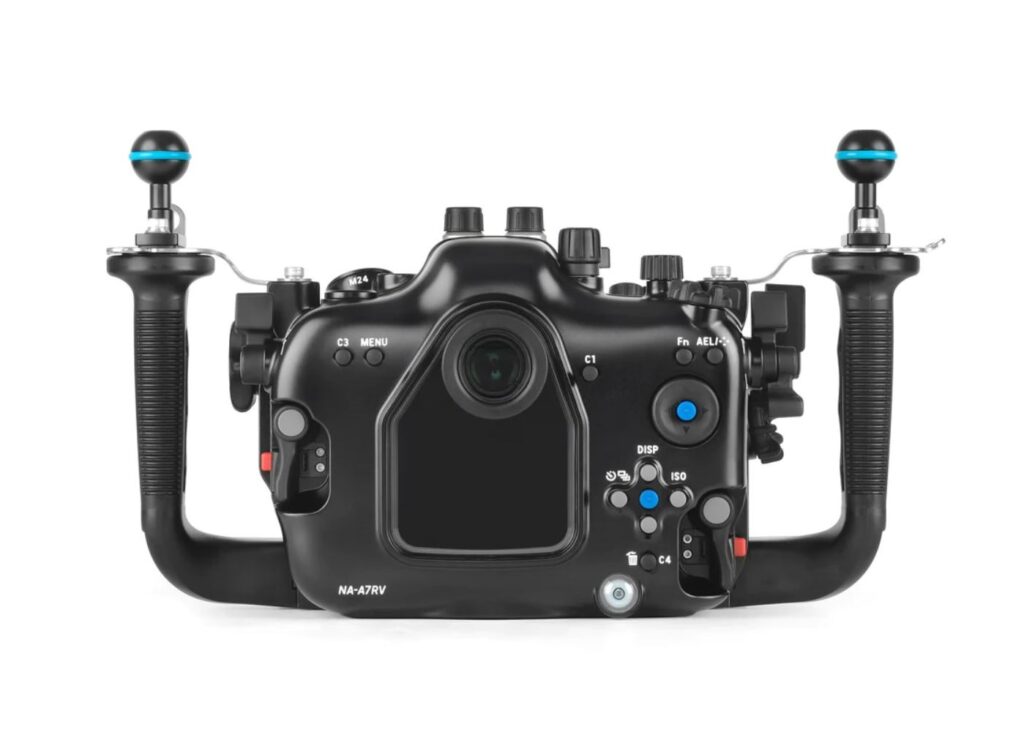
Table of Contents
When it comes to capturing stunning underwater photography and videography with the Underwater Housing for Sony α7R V Sony α7R V, a reliable, high-performance underwater housing is essential. The NA-A7RV Housing by Nauticam is specially designed for Sony’s α7R V, delivering a seamless experience for both novice and professional underwater photographers. Let’s dive deep into what makes this housing a top choice, from its robust build to its advanced functionality.
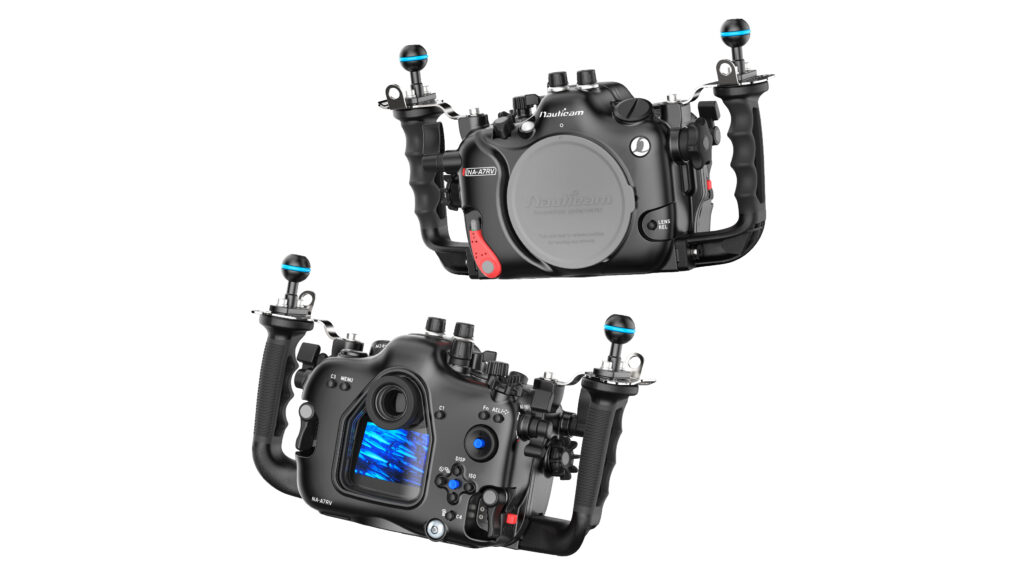
Why Choose the NA-A7RV Housing?
Nauticam has a long-standing reputation for designing innovative, high-quality underwater housing solutions that are crafted to support and enhance the abilities of modern cameras. The NA-A7RV Housing is specifically made to complement the Sony α7R V’s capabilities, ensuring that your underwater shots are as sharp and detailed as they would be on land. With its ergonomic controls, leak detection system, and compatibility with an array of lenses and accessories, this housing is crafted with the underwater photographer in mind.
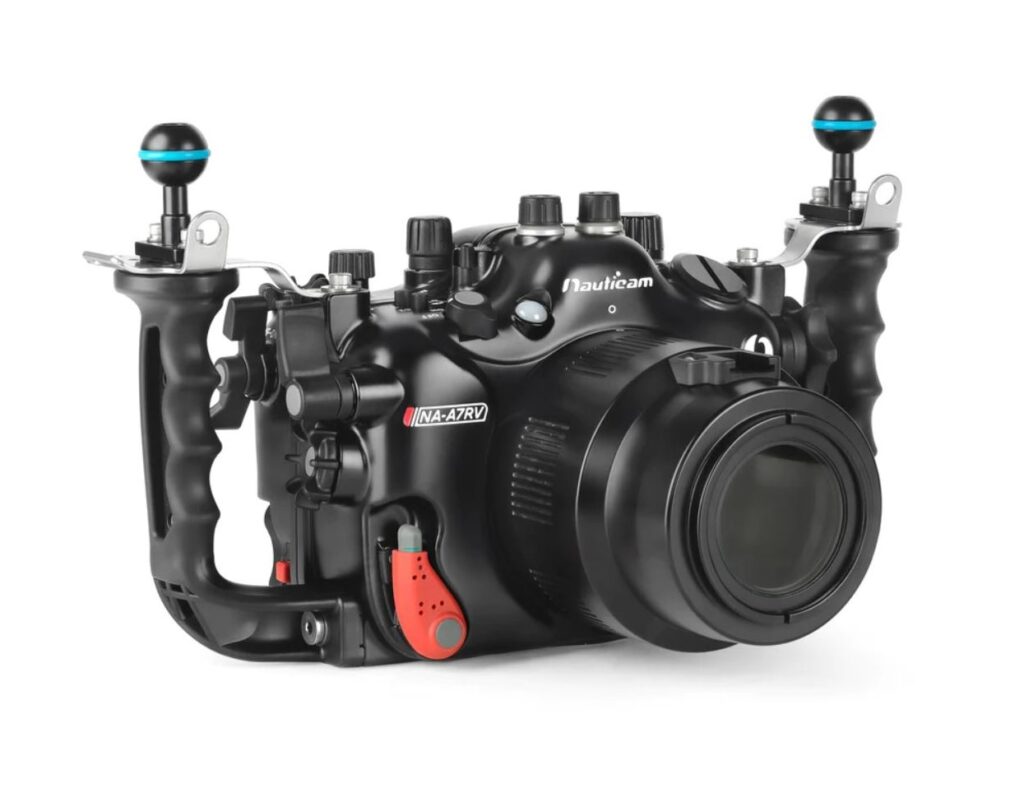
Key Features of the NA-A7RV Housing
1. Durable and Depth-Rated Build
The NA-A7RV is constructed from corrosion-resistant anodized aluminum, making it both lightweight and highly durable, ideal for handling the pressures of deep-sea environments. Rated to depths of up to 100 meters (330 feet), this housing is suitable for various underwater activities, from shallow reef dives to deep-sea exploration. Its rugged construction means you can trust it to protect your camera in the most demanding conditions.
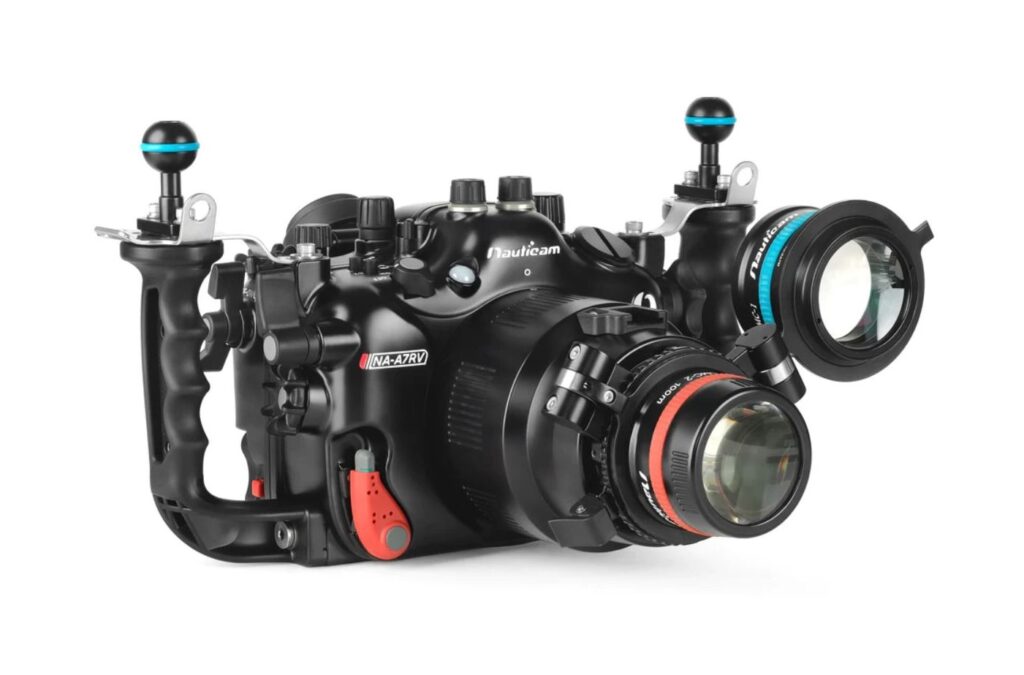
2. Ergonomic and Accessible Controls
With the NA-A7RV, Nauticam has ensured that all critical controls are not only accessible but also ergonomically designed to be used intuitively underwater. The design includes large, textured knobs and levers that can be operated easily, even when wearing thick gloves. This ease of access to settings like ISO, shutter speed, and aperture allows for on-the-fly adjustments, so you never miss a moment.
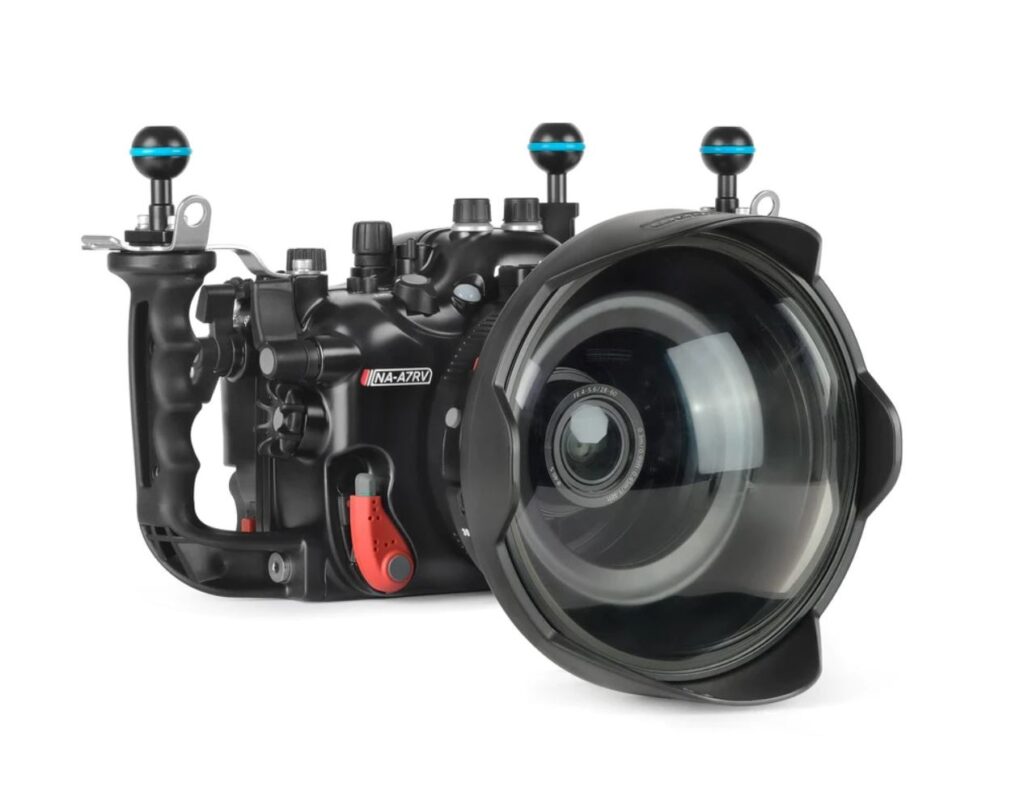
3. Enhanced Leak Detection and Vacuum System
An essential feature of this housing is its integrated leak detection and vacuum monitoring system. This system provides real-time monitoring, alerting you to any seal issues before a dive. The vacuum system helps to ensure the housing is completely watertight, adding a layer of safety that allows you to focus on capturing the perfect shot.
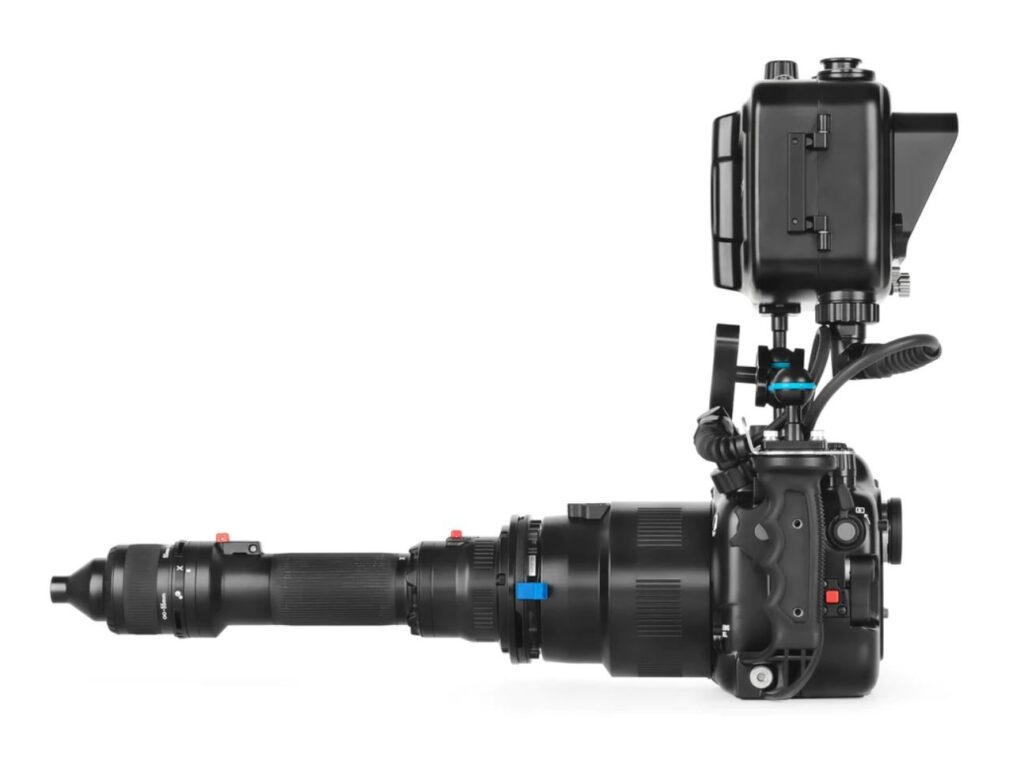
4. Interchangeable Ports for Lens Flexibility
A standout feature of the NA-A7RV housing is its compatibility with the Nauticam N100 Port System, designed specifically for Sony’s α7R V. This port system allows you to use a wide range of lenses, from fisheye to macro, adapting to various underwater photography styles. The flexibility of interchangeable ports enables users to achieve different shooting perspectives, enhancing the versatility of this housing.
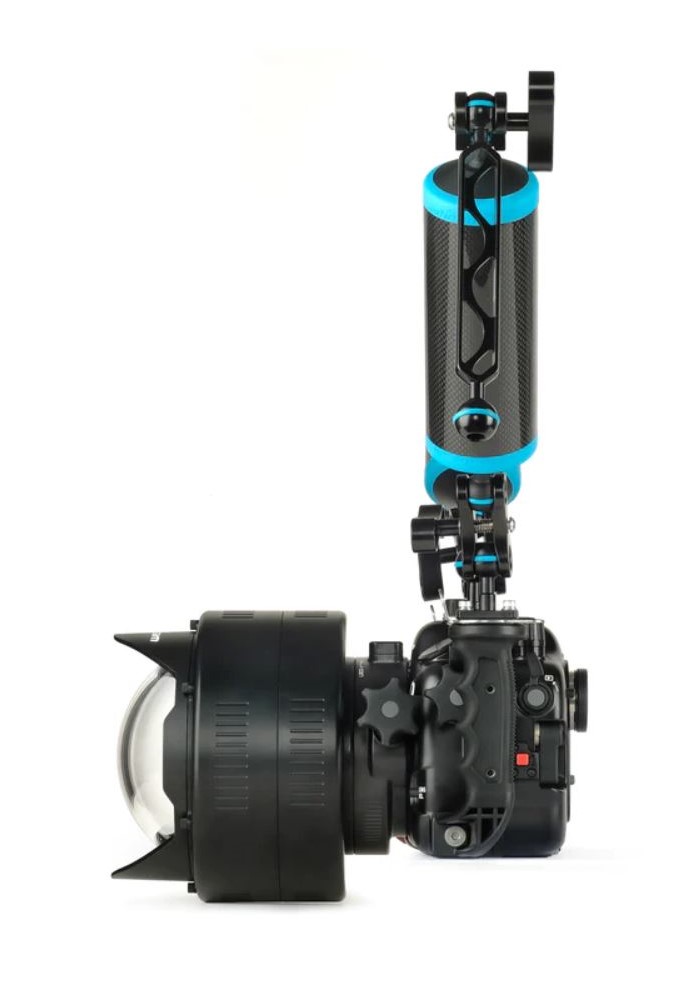
5. Optimized for Sony α7R V Camera Features
Nauticam has designed the NA-A7RV housing to take full advantage of the α7R V’s cutting-edge features, including its impressive 61-megapixel sensor and 8K video capabilities. The housing allows easy access to the α7R V’s custom buttons, supporting functions like focus peaking, custom white balance, and video recording without compromising accessibility.
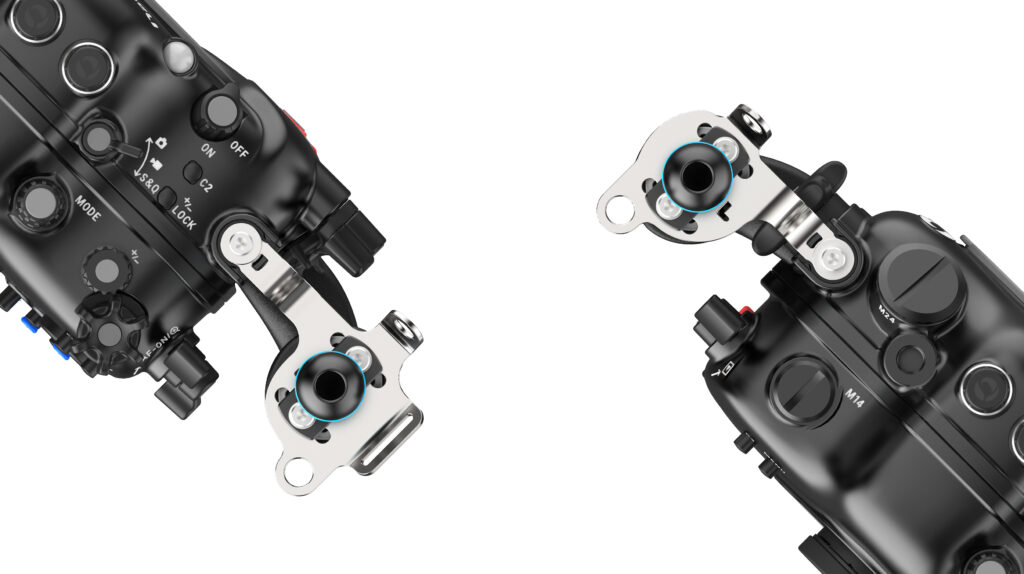
Setting Up the NA-A7RV for Underwater Photography
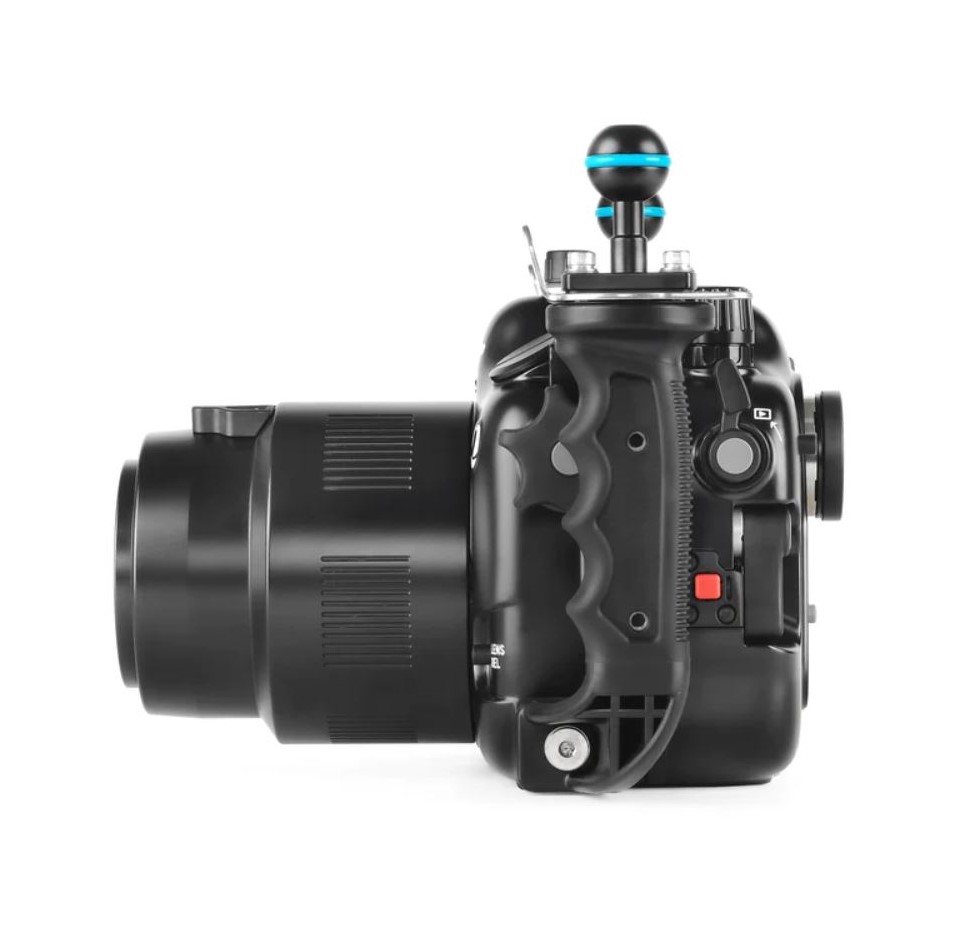
Step 1: Ensure Proper O-Ring Lubrication and Placement
Before each dive, check that the O-rings are clean, lubricated, and correctly seated to prevent leaks.
Step 2: Check the Vacuum Seal
Activate the vacuum system to ensure the housing is fully sealed. The LED indicator should turn green, signifying a secure seal.
Step 3: Choose the Right Lens and Port
Depending on the type of photography you plan to capture, select an appropriate lens and matching port. For wide-angle shots, consider using a fisheye lens, while macro photography may call for a dedicated macro lens.
Step 4: Attach Lighting Accessories
The NA-A7RV offers mounting points for lighting setups, enabling you to use strobes or LED lights, which are essential for achieving vibrant colors and reducing shadows underwater.
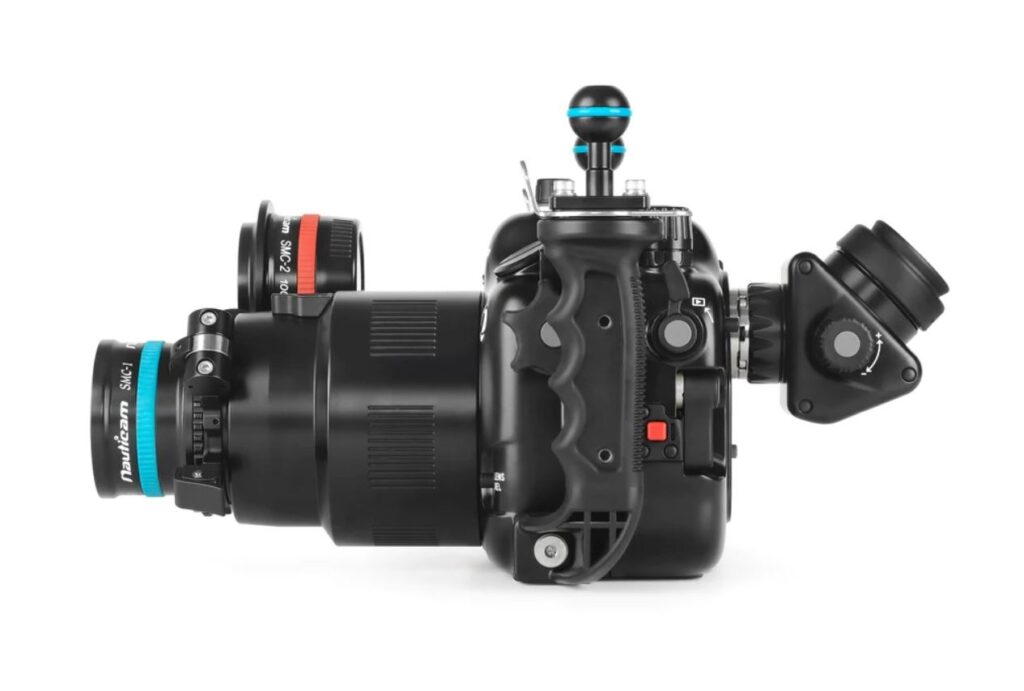
Performance Underwater
When it comes to performance, the NA-A7RV housing delivers an outstanding experience. The controls are highly responsive, allowing for quick adjustments even in cold or turbulent water. Paired with the Sony α7R V’s low-light capabilities, this housing ensures crisp, vibrant shots in various conditions. The housing’s vacuum system and leak detection provide peace of mind, while its adaptable port system ensures you’re equipped for any photographic style.
Pros and Cons
Pros:
- Exceptional build quality and depth rating (100 meters).
- Ergonomic and intuitive controls for easy handling.
- Reliable leak detection and vacuum seal system.
- Compatible with the versatile N100 Port System.
Cons:
- Higher price point, suited more for serious photographers.
- Setup can be slightly complex for beginners.
Frequently Asked Questions
Is the NA-A7RV housing compatible with all Sony α7 series lenses?
The NA-A7RV is compatible with the Nauticam N100 Port System, which supports a wide range of lenses. It’s recommended to check the specific port chart provided by Nauticam to ensure compatibility with your preferred lens.
How does the vacuum system work in the NA-A7RV?
The housing includes a built-in vacuum valve. When you engage the vacuum pump, it removes air from the housing, creating a sealed environment. The LED indicator shows green when the housing is sealed, providing reassurance before you dive.
Can I add external accessories to the NA-A7RV housing?
Yes, the housing is designed with multiple mounting points for accessories, including lighting, float arms, and focus gears, allowing you to customize your setup to your needs.
What depth is the NA-A7RV housing rated for?
The NA-A7RV is depth-rated up to 100 meters (330 feet), making it suitable for recreational diving, technical diving, and underwater cinematography in deep-sea environments.
Is the NA-A7RV housing difficult to set up for first-time users?
While the setup process can be intricate for beginners, Nauticam provides clear guidelines. With some practice, most users find the setup manageable and can enjoy the housing’s functionality without complications.
Conclusion
The NA-A7RV Housing for the Sony α7R V by Nauticam is an exceptional investment for underwater photographers seeking a robust, reliable, and versatile housing. Designed with high-quality materials, an ergonomic layout, and comprehensive safety features, it stands out as a top choice for capturing vivid underwater imagery. Although it comes at a premium price, the functionality and durability it offers make it well worth it for serious photographers.
Find the product at our main site: NA-A7RV Housing for Sony α7R V Camera
For more information on compatible lenses and accessories, and to explore other options, check out our full Underwater Housing Collection at Fotografit.
